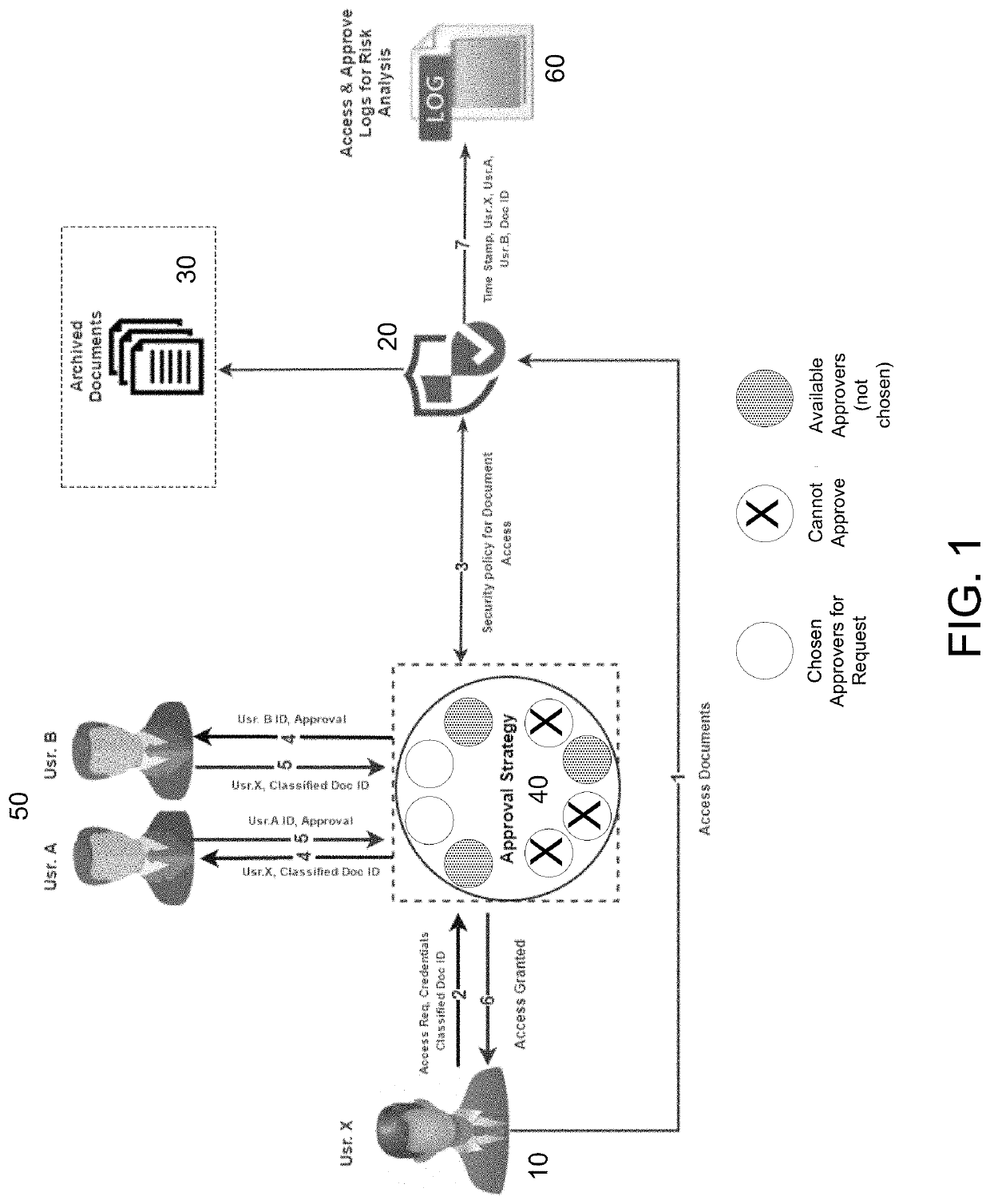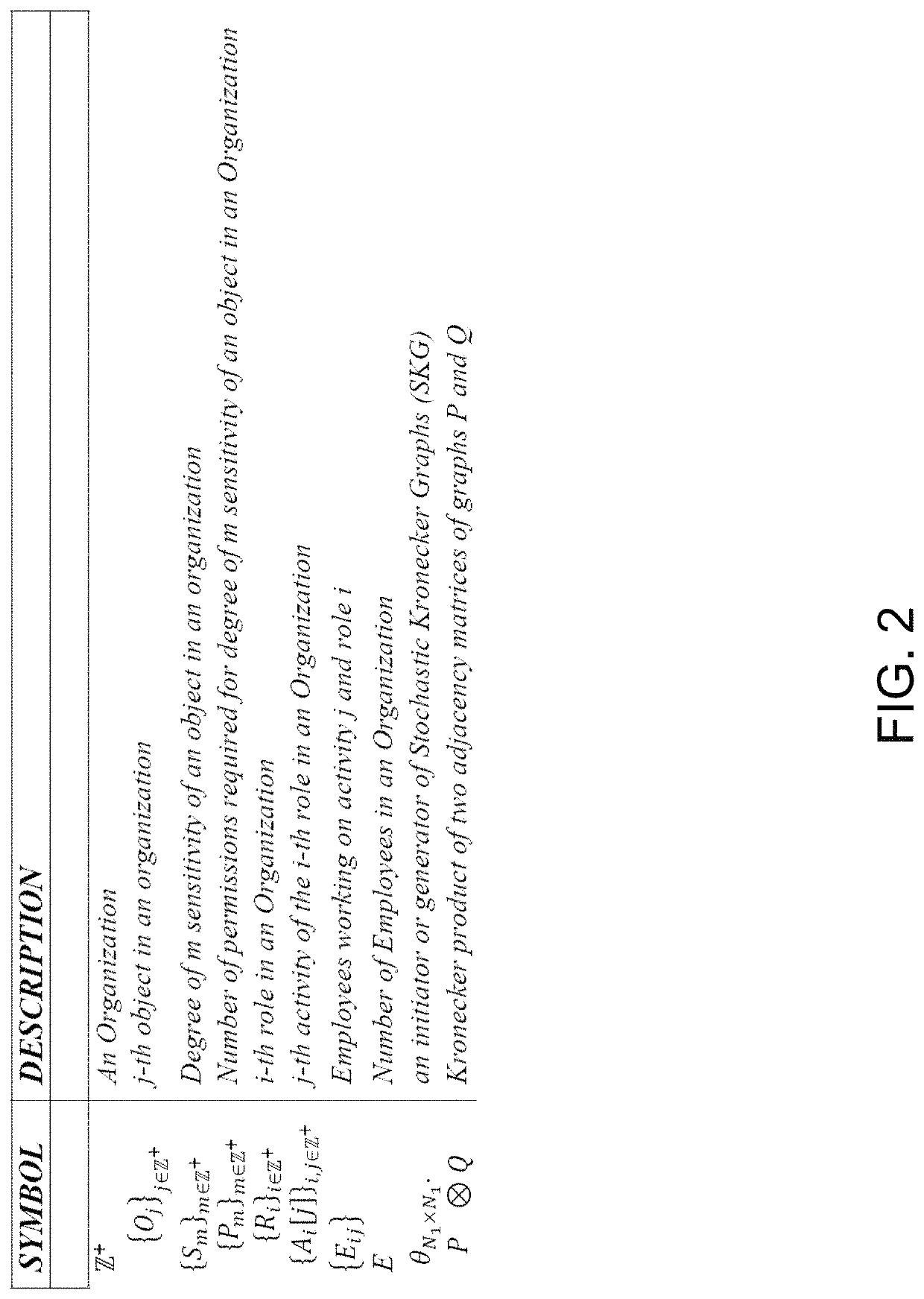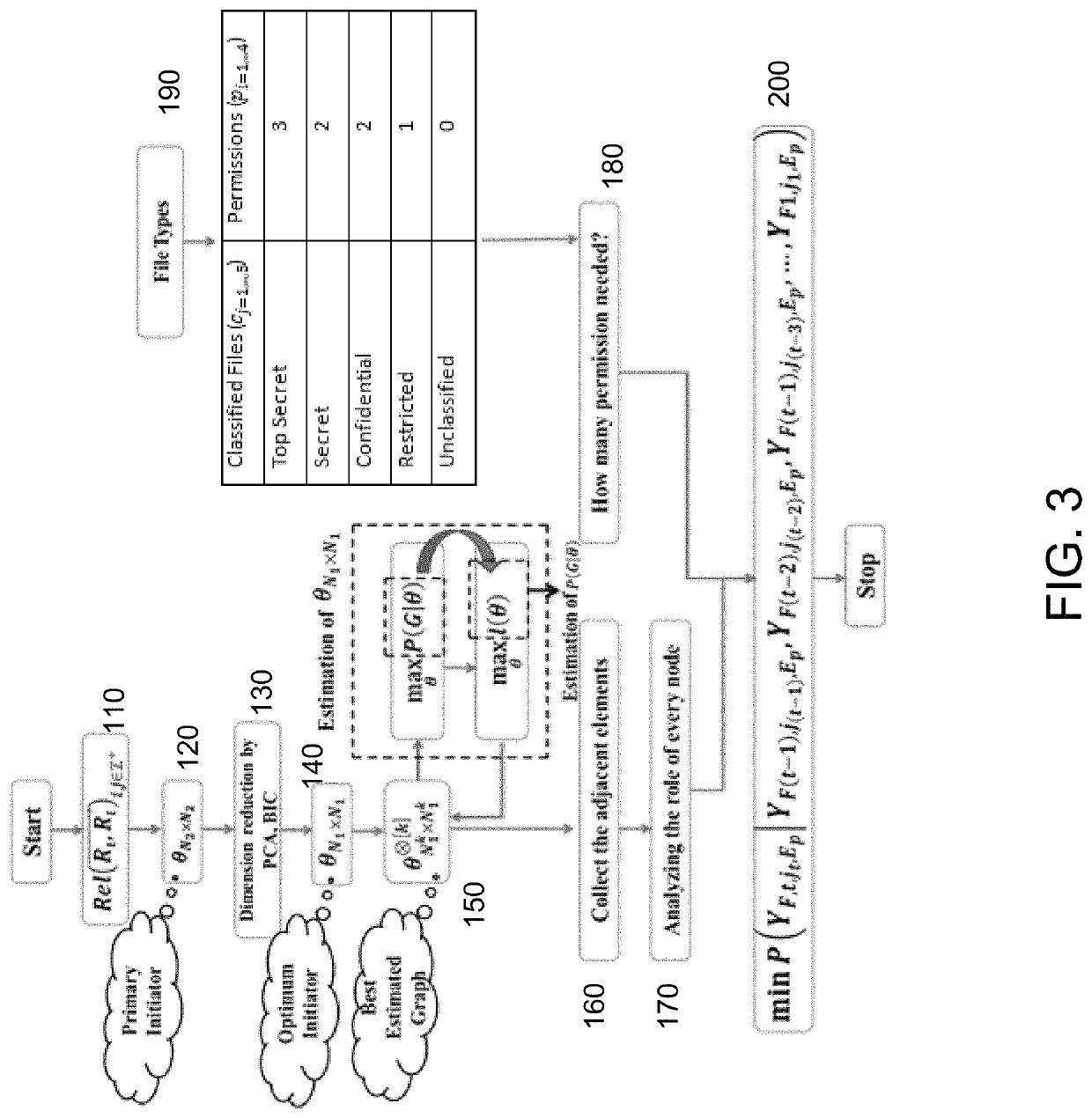Multi-user permission strategy to access sensitive information
a technology for accessing sensitive information and multi-user permissions, applied in data processing applications, digital transmission, computing, etc., can solve problems such as inability to determine identities, and achieve the effect of minimizing the effect of factors
- Summary
- Abstract
- Description
- Claims
- Application Information
AI Technical Summary
Benefits of technology
Problems solved by technology
Method used
Image
Examples
Embodiment Construction
[0024]In various exemplary embodiments, the present invention comprises a system and related methods for providing greater security and control over access to classified files and documents and other forms of sensitive information based upon a multi-user permission strategy centering on organizational structure. Based on the sensitivity or classification of the information being requested by a user, approvers are selected dynamically based on the work environment (e.g., mobility, use of the computing device seeking access, access policy, and the like).
[0025]Current defense-in-depth security practices mainly focus on external attacks and illegal access but with not enough emphasis on the unintentional misuse of access or malicious intent of legitimate users. In particular, mechanisms of user access to sensitive data rely completely on the users' trust. Today's organizations rely on either one policy for accessing all documents or on separate access policies for documents, without con...
PUM
 Login to View More
Login to View More Abstract
Description
Claims
Application Information
 Login to View More
Login to View More - R&D
- Intellectual Property
- Life Sciences
- Materials
- Tech Scout
- Unparalleled Data Quality
- Higher Quality Content
- 60% Fewer Hallucinations
Browse by: Latest US Patents, China's latest patents, Technical Efficacy Thesaurus, Application Domain, Technology Topic, Popular Technical Reports.
© 2025 PatSnap. All rights reserved.Legal|Privacy policy|Modern Slavery Act Transparency Statement|Sitemap|About US| Contact US: help@patsnap.com



